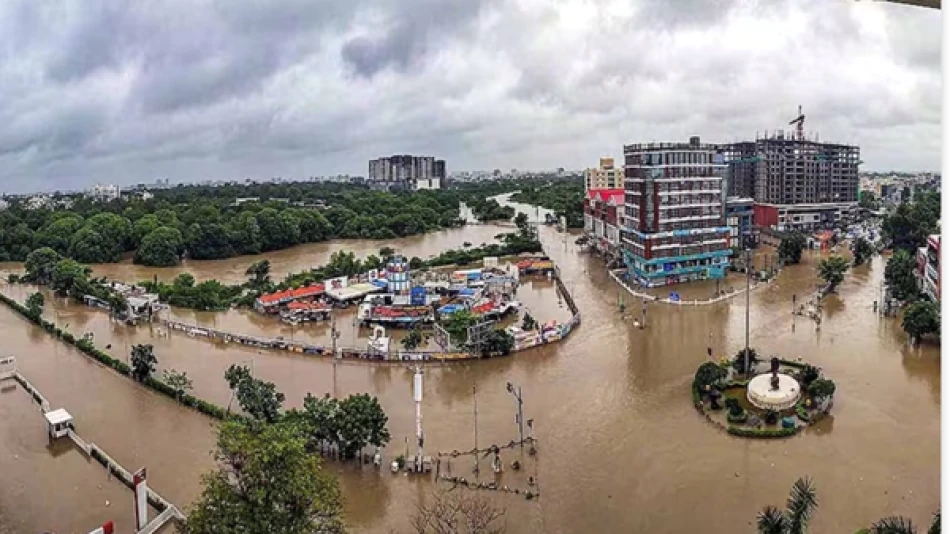
Heavy Floods Devastate Villages in India's Rajasthan State
Rajasthan Floods Expose India's Infrastructure Crisis as Giant Sinkhole Swallows Villages
Catastrophic flooding in India's northwestern Rajasthan state has created a massive sinkhole near Sawai Madhopur and triggered widespread evacuations after the Surwal Dam overflowed. The disaster highlights India's mounting vulnerability to extreme weather events, raising urgent questions about infrastructure resilience and disaster preparedness in one of the world's most climate-exposed regions.
Dam Failure Triggers Mass Displacement
The Surwal Dam's overflow has submerged entire villages including Surwal, Dhanoli, Gujjar, Jadavata, Sheesha, and Mashipora, forcing hundreds of families from their homes. The flooding has left residents stranded on rooftops while rescue teams struggle to reach affected areas through damaged infrastructure.
The formation of a giant sinkhole near Sawai Madhopur has severed critical access roads, effectively isolating communities from emergency services. This geological collapse underscores how prolonged rainfall can destabilize terrain, particularly in regions where rapid development may have compromised natural drainage systems.
Economic and Logistical Paralysis
The flooding of the Lalsot-Kota highway—a vital commercial artery—has reduced traffic to tractors and heavy vehicles only, severely disrupting regional commerce. This transportation bottleneck will likely impact supply chains extending far beyond Rajasthan, affecting agricultural markets and industrial operations across northern India.
In the Dausa region, 24-hour continuous rainfall has transformed low-lying roads into rivers, creating what officials describe as "massive destruction." Entire neighborhoods remain underwater, with residents facing acute shortages of food and clean drinking water.
India's Climate Adaptation Challenge
This disaster reflects a broader pattern of extreme weather overwhelming India's infrastructure. Unlike countries such as the Netherlands or Singapore, which have invested heavily in flood management systems, India's rapid urbanization has often proceeded without adequate consideration of monsoon resilience.
The timing is particularly concerning as India experiences increasingly erratic monsoon patterns linked to climate change. Traditional seasonal flooding has given way to more intense, concentrated downpours that existing drainage and dam systems cannot handle.
Investment Implications and Policy Response
For investors and policymakers, Rajasthan's crisis signals the urgent need for infrastructure upgrades across India's flood-prone regions. The economic cost of reactive disaster response far exceeds proactive flood management investments, yet political incentives often favor visible development projects over resilient infrastructure.
The disaster may accelerate government spending on climate adaptation measures, potentially benefiting construction and engineering firms specializing in flood management. However, the immediate focus remains on rescue operations and restoring basic services to affected communities.
As rescue efforts continue, this flooding serves as a stark reminder that India's economic growth must be matched by investments in climate resilience—or face increasingly costly disasters that threaten both lives and development gains.
 Layla Al Mansoori
Layla Al Mansoori







